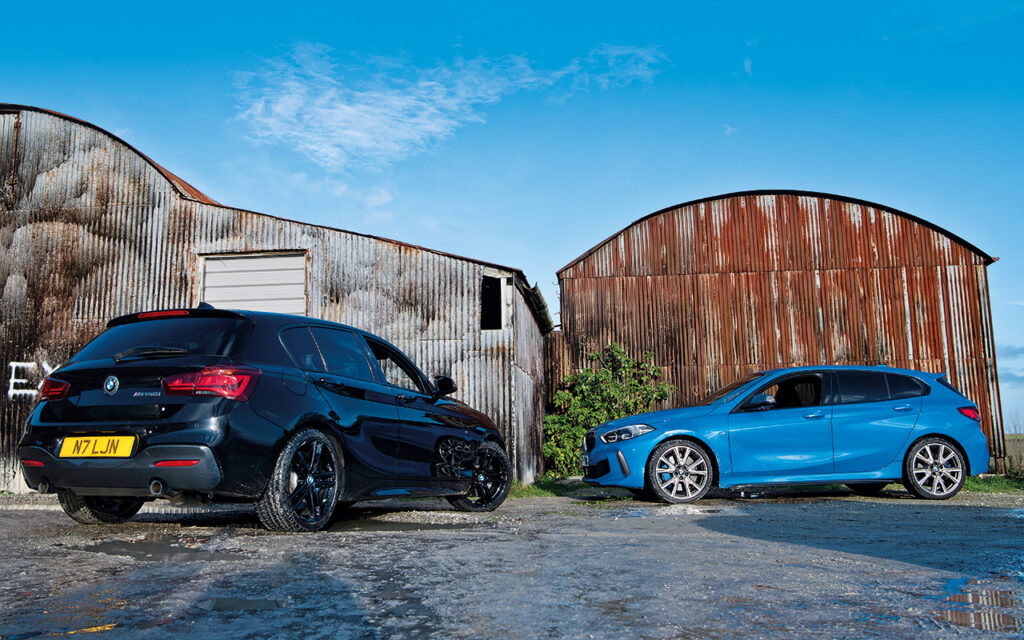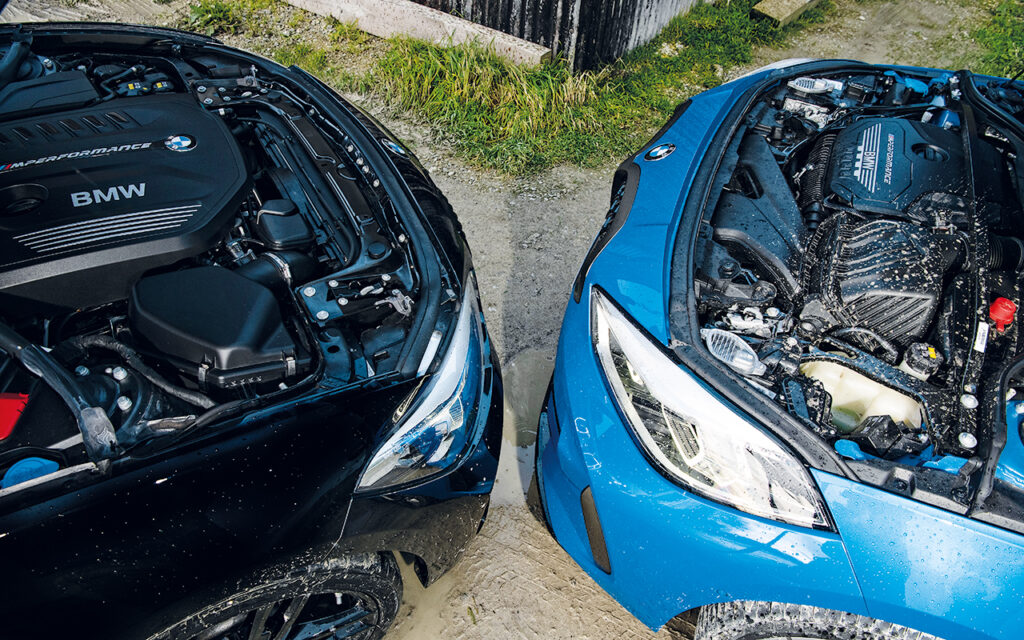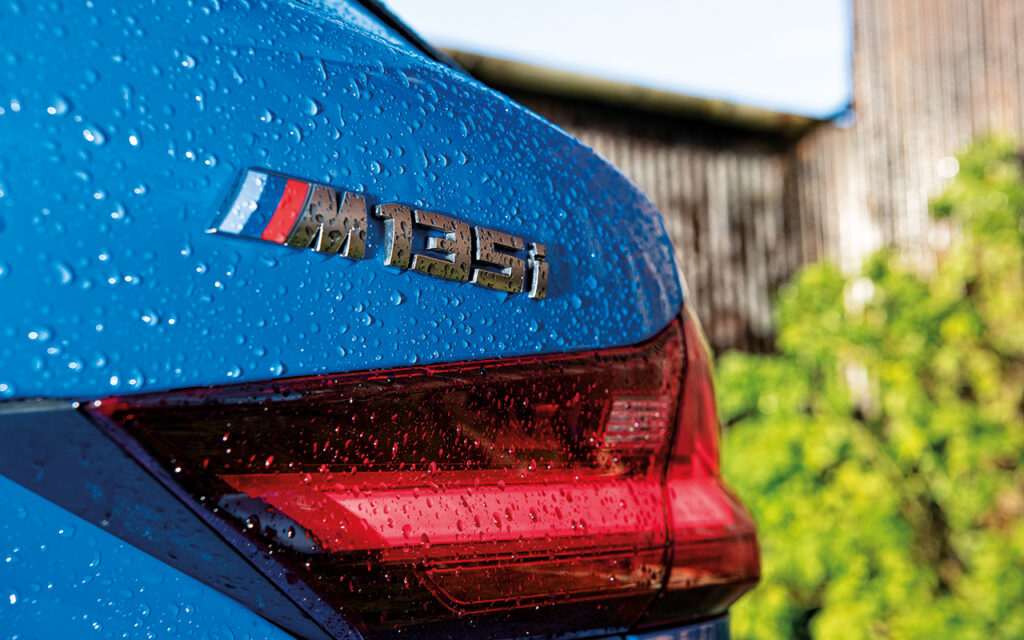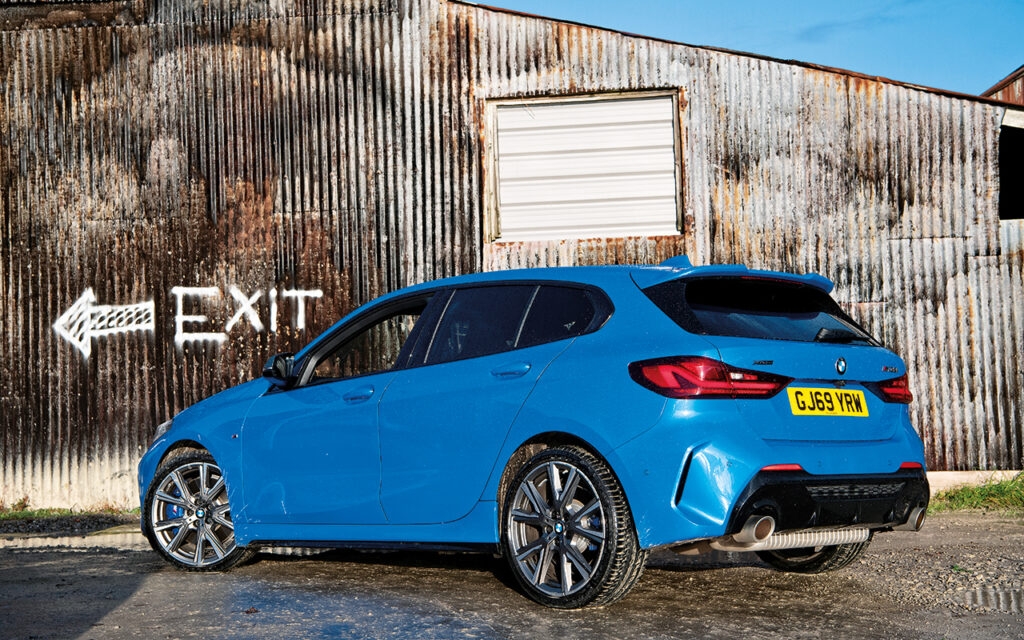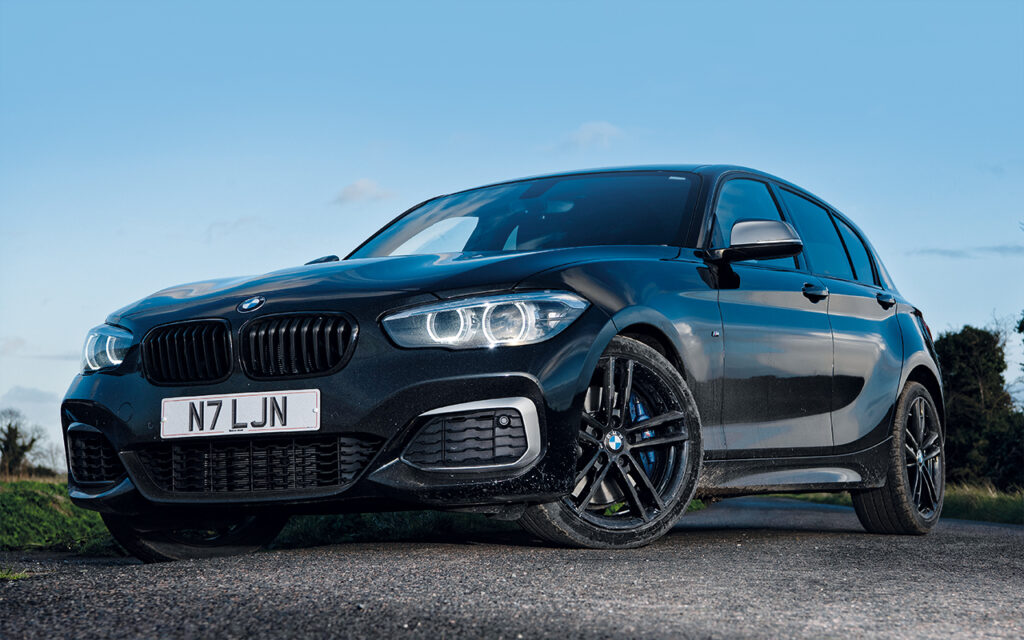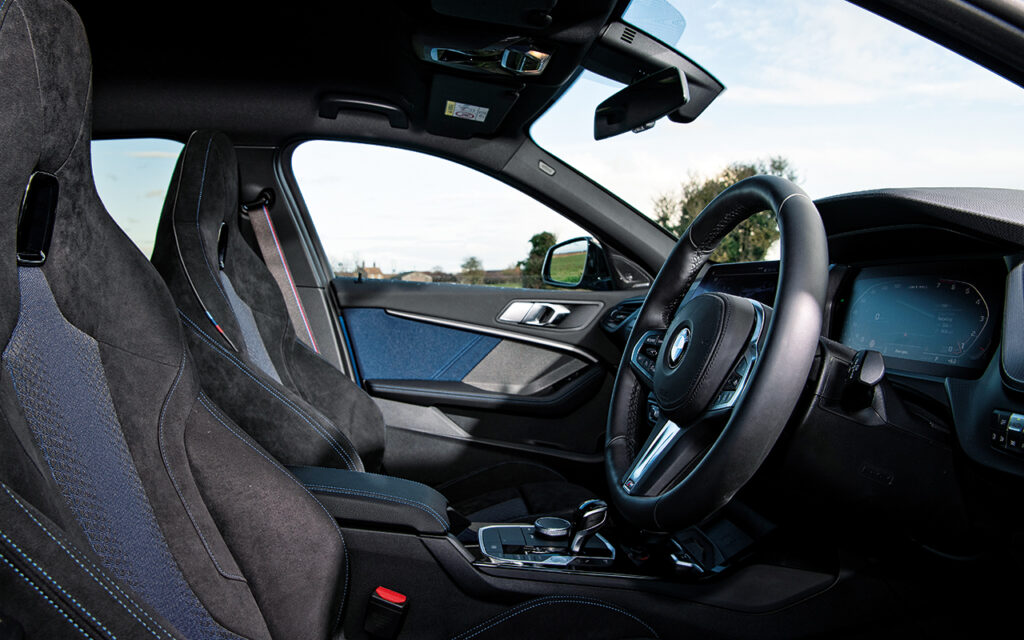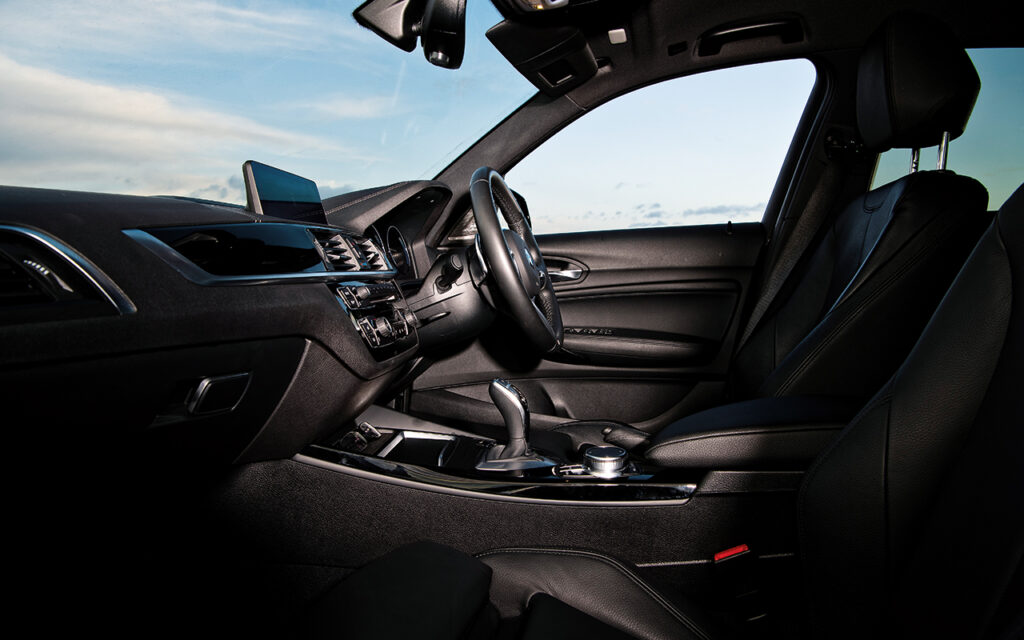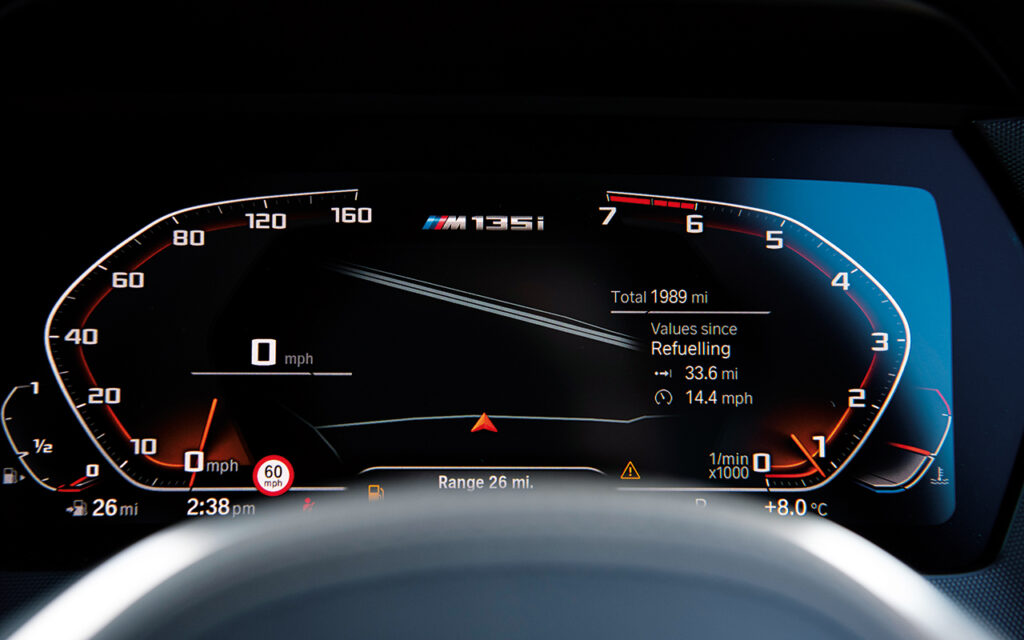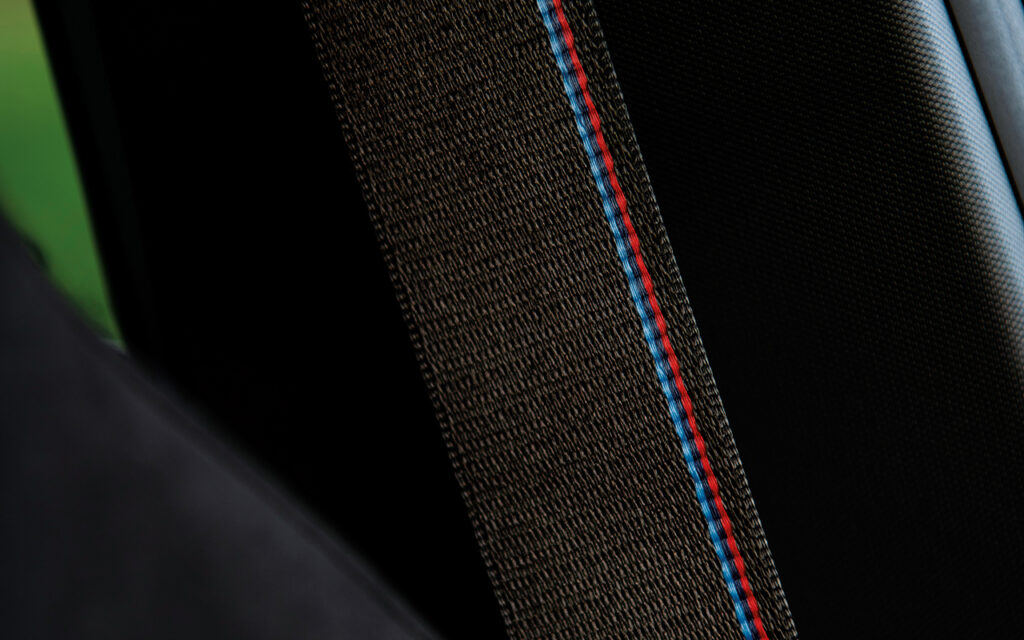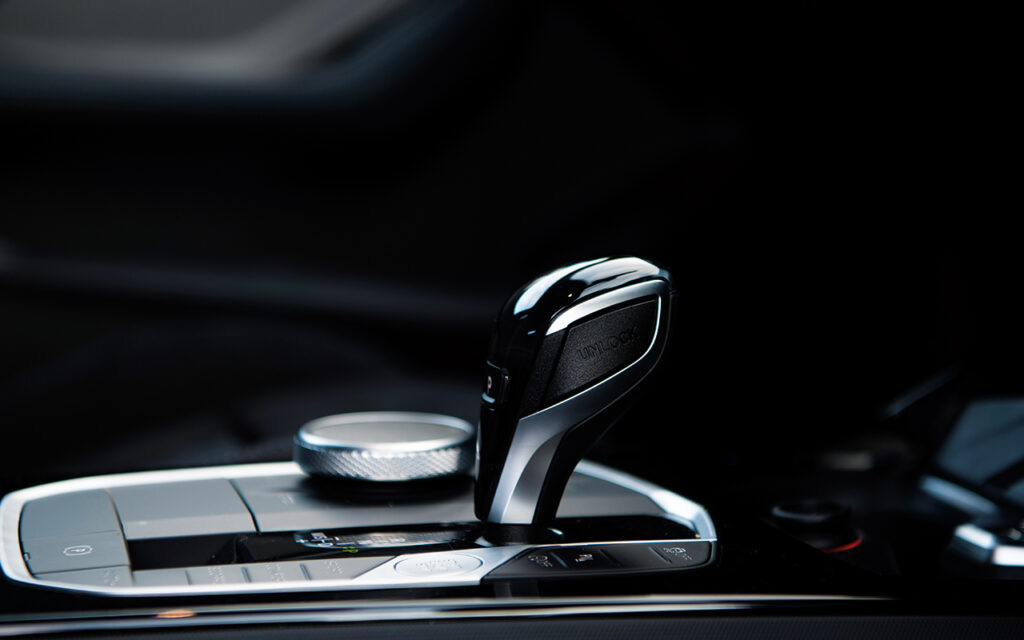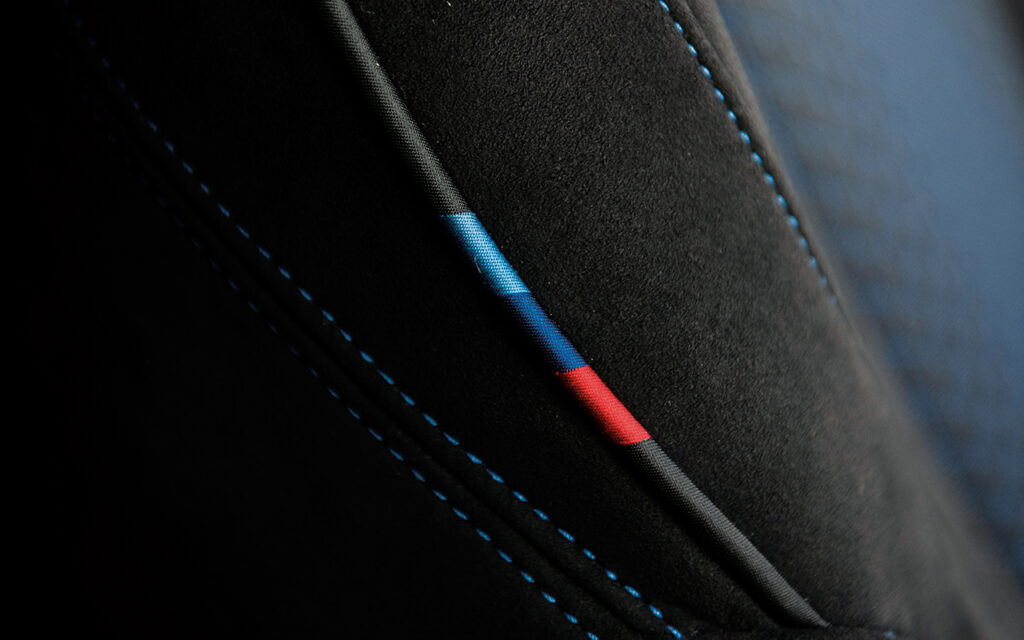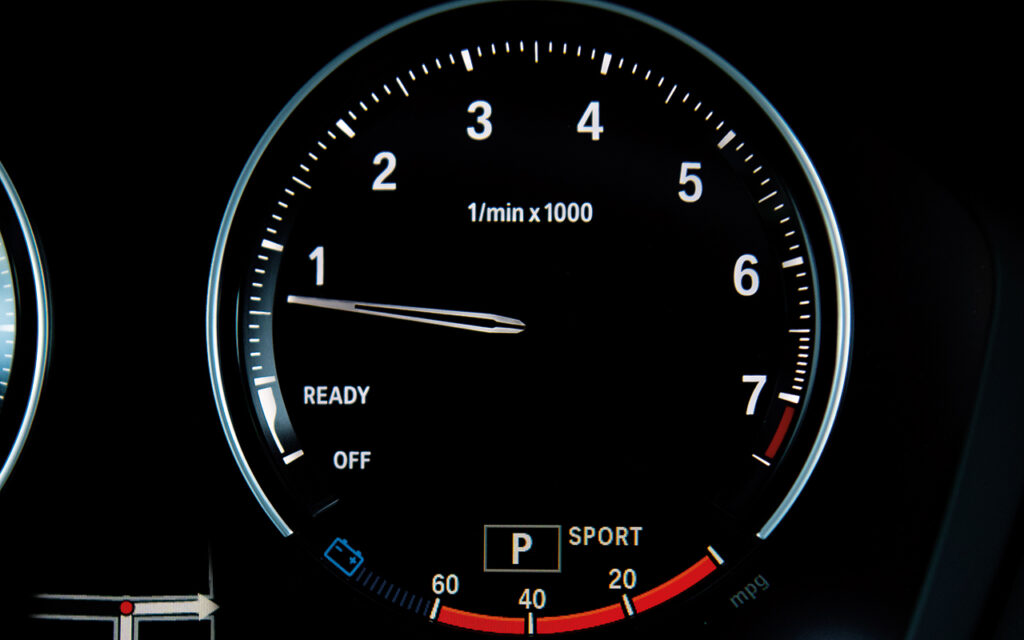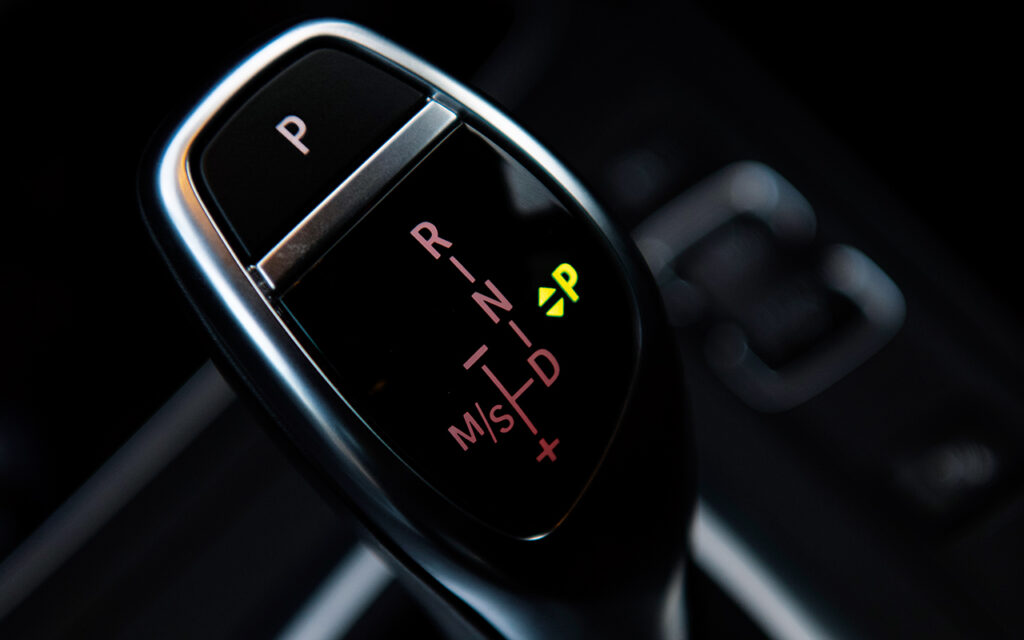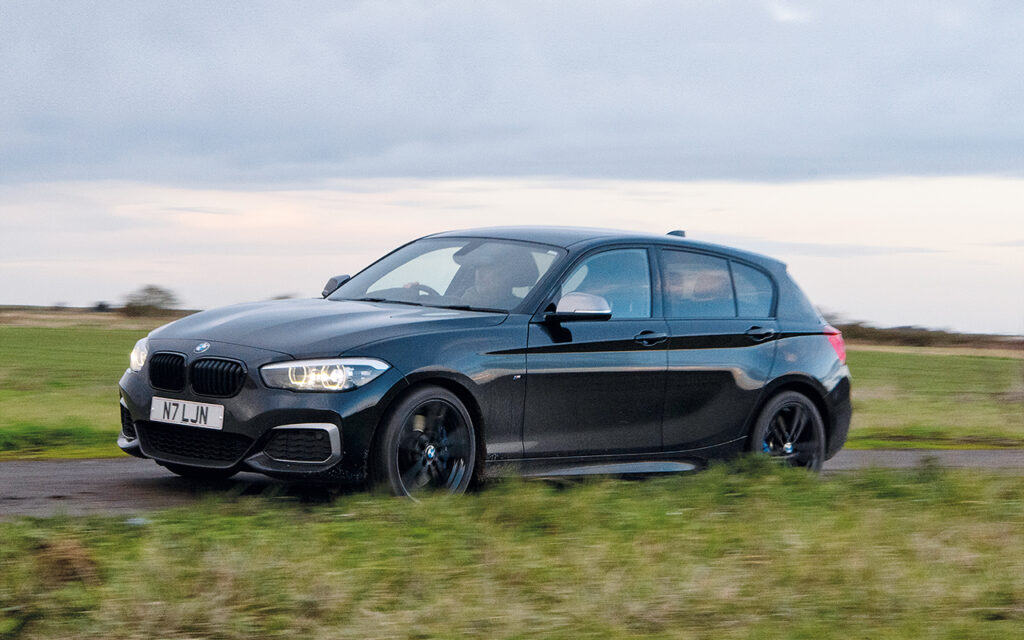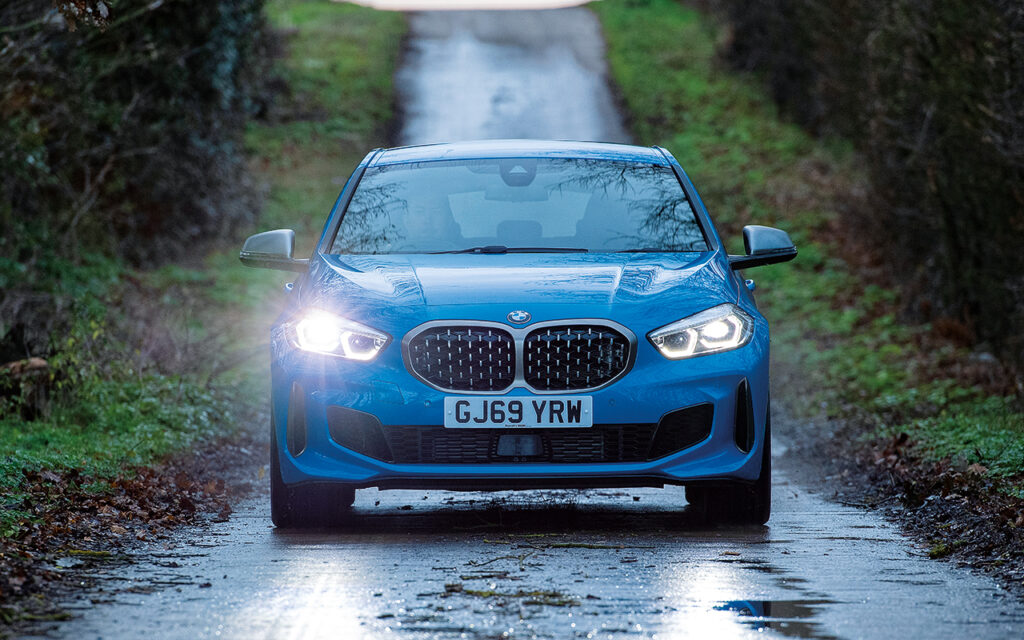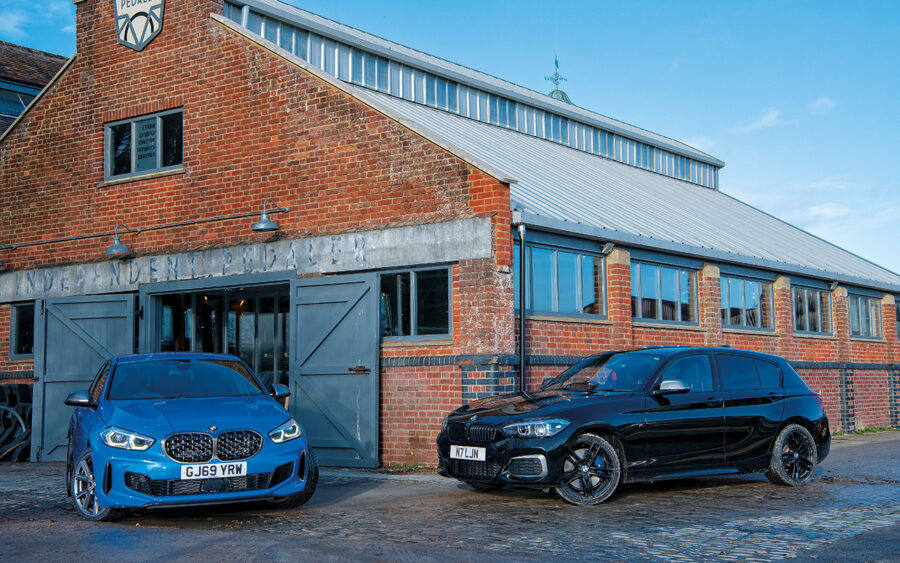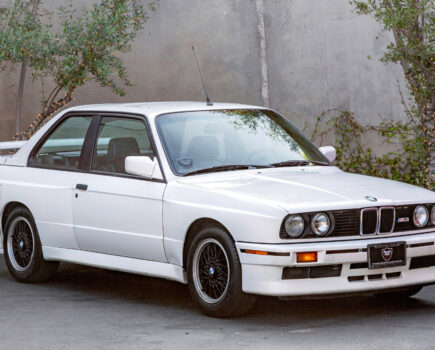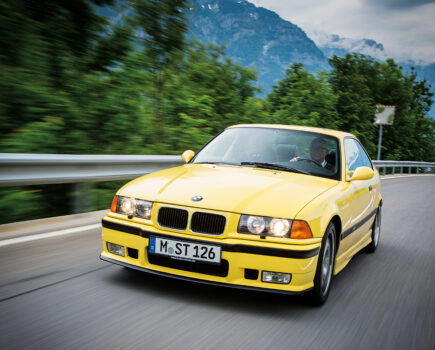Can the M135i with its four-cylinder turbocharged motor and four-wheel drive find a place in our hearts like the six-cylinder, rear-drive M140i predecessor did?
Words: Bob Harper Images: Jason Dodd
Sometimes it’s hard not to feel a little sorry for car manufacturers. They spend a fortune in research and development creating the best possible machine they can, yet almost by the time that model has gone on sale they’re already working on its replacement. And, of course, that replacement must be better in every respect than its predecessor while at the same time keeping the bean counters happy.
Inevitably we’ll reach a point – some might say we’re already there – where the margins between the old model and the new one are so fine that there’s almost no reason to upgrade – is that newer, shiny, showroom fresh model really a step up from what’s already parked on your drive? Especially when you consider downsizing engines is all the rage among manufacturers at the moment – rumours coming out of BMW suggest the that the V8 and V12 are not long for this world and Mercedes has more or less already admitted its new C63 AMG will ditch a V8 in favour of a hybrid four-pot.
Our two protagonists here are a case in point and if you just look at the raw stats you could be forgiven for thinking that newer doesn’t necessarily mean better. The F20 M140i packed a delicious straight-six which offered up 340hp and 369lb ft of torque which equated to a 0-62mph time of just 4.6-seconds in its 8-speed auto form we have here. Contrast that with the M135i xDrive which has lost a litre in capacity as well as a couple of cylinders, now ‘makes do’ with 306hp and 332lb ft of torque. It’s 0-62mph time is 0.2-seconds slower, but let’s face it the only place you’ll really notice that is when bragging down the pub.
While no doubt the majority of buyers of the hottest M-branded 1 Series models are most likely to be concerned with performance, it is worth balancing the equation and looking at where the newer car does definitively score points over its predecessor. The weeping and wailing from the forums that BMW has been ruined as a company by its latest front-wheel drive offerings do seem to have died down somewhat, but when you see what it brings to the 1 Series it’s hard to argue against.
The vast majority of potential 1 Series drivers are looking for a relatively spacious hatch and for the previous generation with its longitudinally mounted engines and rear-wheel drive this was a problem – it just couldn’t compete with the VW Golfs of this world. All that’s changed for the F40 generation though as it’s now based on the UKL2 platform (shared with MINI, X1, X2 etc) with front-wheel drive and transverse engines, that gives an additional 3.3cm of rear legroom and a luggage capacity that’s on a par, or better than, its direct rivals.
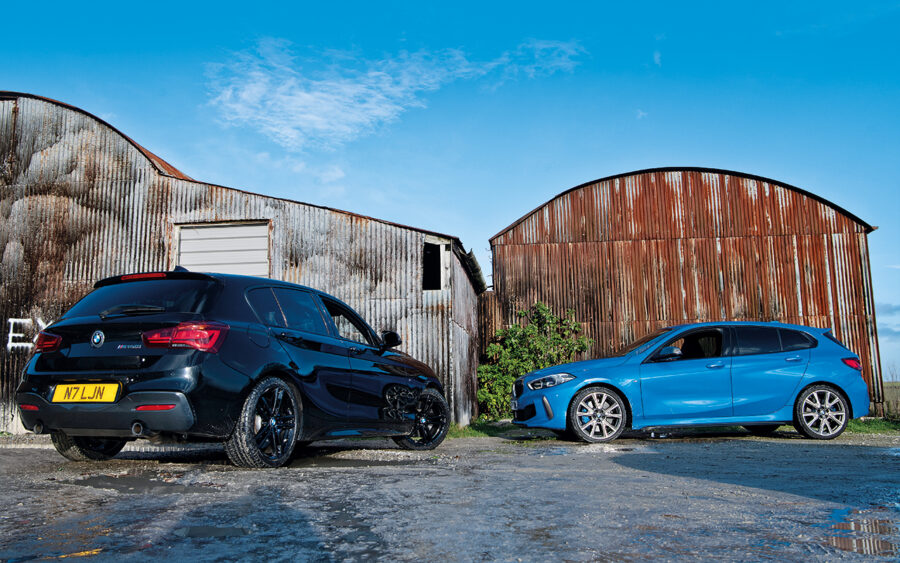
This will keep the vast majority of 1 Series buyers happy, but obviously brings problems when refining the F40 into a high-end performance hatch – BMW’s engineers had little option but to take a leaf out of the book of VW, Mercedes and Audi in opting for the four-wheel drive xDrive route, but there’s more to its hardware than that. Up front there’s a standard fit limited-slip differential while it also features BMW’s new (for combustion engined cars, it’s been used before on the i3) ARB tech which brakes the inside wheels when cornering to mitigate against understeer.
Other technical items of note include the fact that the M135i xDrive can only be ordered with an 8-speed auto unlike the outgoing M140i which could be bagged with either the 6-speed manual or an 8-speed Steptronic. Buyers of the M140i overwhelmingly opted for the auto so the manual has quietly been dropped, but even with the auto ‘box there have been some changes. The excellent ZF that’s fitted to virtually every single BMW model range isn’t compatible with transversely mounted engines so the M135i uses a box from Aisin.
Before we slip behind the wheel we should spare a minute to consider the looks of these two M-lite hatches. You’ll obviously make your own minds up but for me the earlier car is a better resolved package, being less fussy and more cohesive. I wasn’t a fan of the pre-LCI F20/21 1 Series, but the addition of the 2 Series ‘face’ sharpened it up considerably and I can’t get to grips with the new car’s kidney grilles, especially in M135i form – call me a luddite but I’m not fully on board with the new look, give me a simple set of slats rather than this mesh design.
Their interior ambiance is important too – after all that’s what you’ll be seeing for the vast majority of the time you own the car – and I guess which one you prefer will to a certain extent depend on whether you’re an analogue or digital person. That’s not to say the earlier car is lacking in equipment or gadgets and gizmos, but where the M135i offers BMW’s latest operating system and high-end navigation the system in the M140i isn’t quite as fast and the Professional sat- nav was an option. You also get BMW’s new Live Cockpit Professional in the M135i which brings the fully digital instrument cluster along with the Intelligent Personal Assistant which allows you to talk to the car by uttering the phrase “Hey BMW”.
Personally I do prefer the old-style classic white on black round instrumentation – it’s easier to read – and given the entire dash cluster on the new car is digital it would perhaps have been nice for BMW to have given the driver the option of viewing the traditional-style of dials. Overall though there’s a feeling that the new car’s trim quality is higher than the older car, with less black textured plastic on view than before. It is a little busy with a wide variety of trims on view, but the overall ambiance is pretty good. It might only have a cloth and Alcantara interior compared to the M140i’s all-leather set up but the M135i’s seats are excellent, being both comfortable and gripping you in all the right places.
Sitting in the new car after having been used to the older one doesn’t bring any huge shocks really, but before we move on to driving it’s worth noting that some of the M135i’s switchgear seems to have taken a retrograde step. The iDrive controller is now sited to the left of the gearlever with its shortcut buttons around it, but they’re less intuitive to use than before as they’re all part of the same flat panel with small ridges separating them. On the M140i the iDrive was set back a little far for some drivers, but the raised switches around it made for much easier operation without looking at which button you were pressing. Similarly the M140i’s rotary controller for the lights is far superior in operation than the new push buttons in the M135i. Why you would design a new system that requires you take your eyes off the road to operate it is beyond me.

Slipping behind the wheel of the M140i it takes just a scant few seconds to understand why so many buyers fell for this car – the delicious silky smooth rumble that emanates from the engine as you press the starter button. It’s not overly noisy, but there’s enough there for your appetite to be whetted for when you can get it out onto the open road. The 8-speed auto shuffles through the ratios imperceptibly at lower speeds and while the M Sport suspension is firm it’s not uncomfortable. Originally those wanting more comfort could opt for adaptive dampers at an additional £550.
It’s when you up the ante that the M140i shows its true colours though, feeling every bit the sharp driving tool you’d been hoping for. That six-pot up front might be turbocharged but it still has a real appetite for revs, heading up towards its 7000rpm red line with real verve and sounding absolutely delicious while doing so. Alternatively it can be driven in the mid-range, enjoying the punch provided by that 369lb ft that stretches from 1500-4500rpm.
It handles well, too. When compared to a full-on M car there’s perhaps a little more understeer than you might have expected but its cornering attitude can be adjusted with the throttle and there’s nothing quite as satisfying as tipping it into a corner on its powerful M Sport brakes before exiting with a whiff of opposite lock while the B58 ’six bellows its approval. That’s in the dry, but pitch some wet roads into the equation and you need to concentrate as the M140i can become a little unruly if you’re not concentrating on what you’re doing. Use the throttle like an on/off switch and you’ll be seeing a lot of the traction control light and not gaining much in the way of forward momentum – be a little more judged with your inputs and it’ll still cover ground quickly. You also need to exercise caution pulling out of junctions in the wet as it’s easy to spin up those rear wheels.
The overriding impression though is of a very well sorted traditional rear-wheel drive car, the fact that it’s in a relatively compact hatchback body is a bonus, although at 1550kg it’s no lightweight. It’ll put up with mooching around town or pottering down to the shops but will then really reward when you’re on a charge, giving it a duality of purpose that’s relatively rare these days. I love it, and it’s set a pretty high bar for the M135i xDrive to live up to.
The slightly less than exciting four-pot warble that greets you when you start the M135i isn’t a great start despite some augmented reality going on with piped engine noise through the speakers, and while it sounds better as you extend it it’s not as rev hungry as the six-pot and there’s not really much point in trying to ring it out as it’s given its best by 5500rpm or so. While it might not be the most stimulating four-pot in BMW’s back catalogue it does deliver the goods and rocks the M135i along very rapidly indeed, accompanied by the odd pop and bang from the exhaust when Sport mode is selected. It’s not as exciting as the M140i, but there’s no doubt it’s equally as quick.
While it doesn’t have the same handling balance as the M140i it’s certainly an entertaining companion on a back road blast and it has more than enough hardware to make it drive very well. The limited-slip diff combined with the ARB tech means it really does turn in exceptionally well and follows your chosen like with pretty leech-line tenacity. What it’s missing unless you’re trying harder than is advisable on the public road is the playful rear end that made the M140i such fun.
However, add some inclement conditions into the mix and the M135i xDrive is incredibly surefooted, hanging on unyieldingly virtually no matter how wet the roads are. In these conditions you do get the true measure of the car’s chassis balance in that it if you push it hard it eventually feels like a front-drive machine, with some assistance from the rear wheels, rather than BMW’s other xDrive offerings (from 3 Series up) which feel like they’re rear-drive with some help from the front wheels. That’s not to take anything away from the M135i’s ability – it’s a hugely capable car, and on a bumpy, wet back road it’d easily pull away from an M140i.
Just about the only downside to its configuration is that the Aisin 8-speed ‘box isn’t quite as capable as the ZF unit in the M140i. The ZF feels alert and shifts precisely when you want it to, but when asking for a down change in the M135i it’s not quite so quick with an almost imperceptible pause before the gear slots home. It’s a minor point perhaps as is the fact that the newer car’s stubby gearlever really is a little too short, especially when you’re quickly trying to knock the lever to the left to engage its faster changing mode – it’s all too easy to miss the lever entirely and tap your passenger on the knee instead.
Overall though these are both cracking little hot hatches. They cover the ground indecently rapidly and while the M140i might not be quite so fast in some conditions it counters by having the more soulful drivetrain and a more entertaining side to its nature. I guess from BMW’s point of view the M135i xDrive is a superior car; roomier, faster and more economical, too. As an all-round proposition it’s the better car, but it’s the M140i that tugs at the heart strings.


